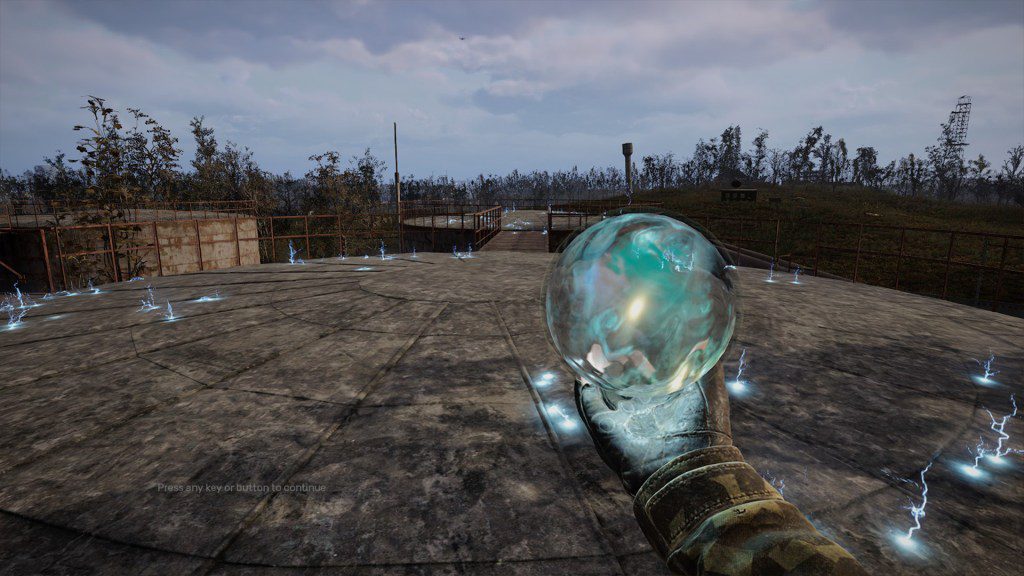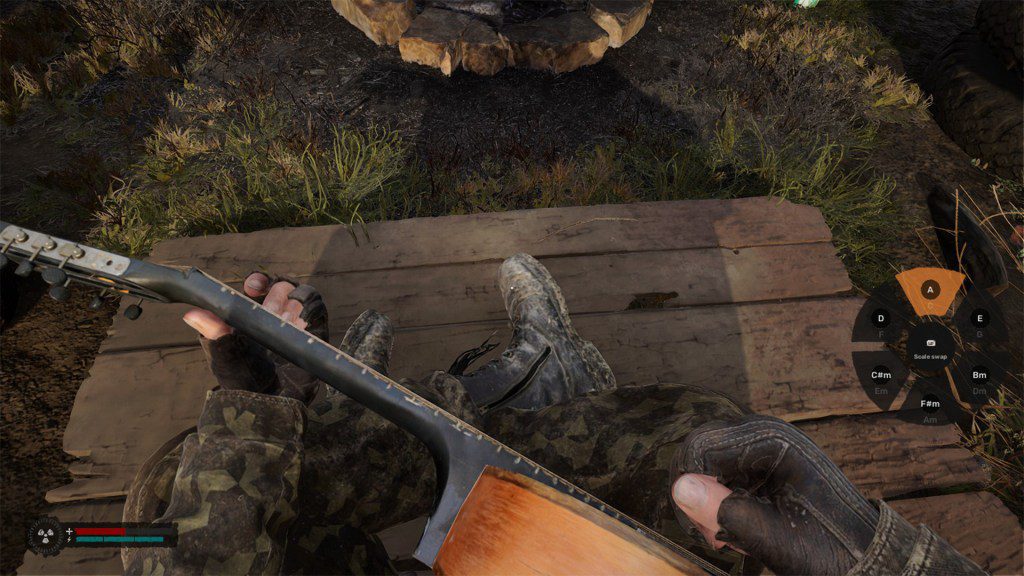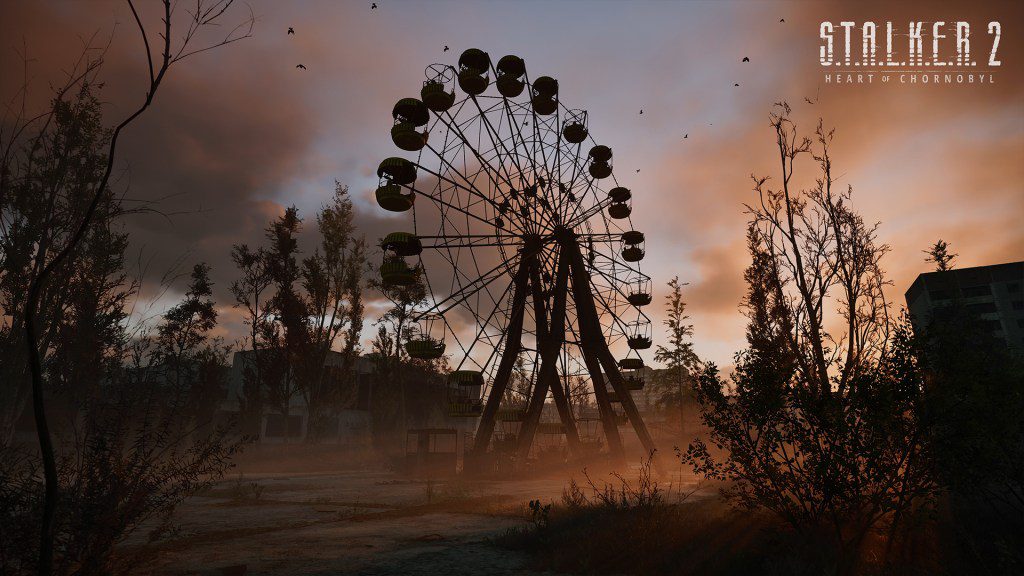‘S.T.A.L.K.E.R. 2’ Makes the War in Ukraine Into a Playable Nightmare
Making any video game is a minor miracle, and the developer of S.T.A.L.K.E.R. 2: Heart of Chornobyl (out now), GSC Game World, has defied the odds by finishing the game amid Russia’s invasion of its home country, Ukraine. GSC’s experiences of living through and fighting against an invasion have influenced the brutality of this game, and a player’s will to survive in the harsh and oppressive world of the Chernobyl Exclusion Zone will be tested.
Set in an alternate history based on the real-life 1986 Chernobyl nuclear reactor meltdown, unexplainable anomalies in the Zone caused by the disaster warp the laws of physics and make life within it harsh and violent. This sci-fi first-person shooter is based on the 1972 novel Roadside Picnic, and Andrei Tarkovsky’s 1979 film adaptation of the book, Stalker. In the game, powerful artifacts are produced by the Zone’s anomalous energy, and the people who travel to it in search of them are dubbed stalkers. Players take on the role of Skif, who becomes a stalker after his home in Ukraine is destroyed by a rogue anomaly.
Skif’s story parallels that of S.T.A.L.K.E.R. 2‘s Ukrainian developer, GSC Game World. Like Skif, the developers of GSC had to flee Kyiv, where the studio was founded. A developer diary posted to YouTube shows they stuck it out for as long as they could. Before they relocated to Prague, narrative designer Dariia Tsepkova spent months working on the game whilst living in a corridor alongside a one-eyed dog that had been injured during Russia’s bombings. Voice director Andrii Maksiuta’s pet cat was killed during the shelling, and several team members entered military service to defend their country while still working on the game.
Although the game began as a continuation of a story about past tragedies in Ukraine, it quickly became something more contemporary and personal. Speaking with The New York Times in September, story director Yaroslav Kravchenko discussed the ways that the team’s new reality bled into their work, saying, “We see things differently now, though the prism of war.”
The S.T.A.L.K.E.R. series draws upon Ukraine’s real history as a former Eastern Bloc nation under the influence of the USSR. The real-world 1986 Chernobyl disaster that inspired the series occurred when a nuclear power plant outside Pripyat, Ukraine, had a violent meltdown. It caused the largest release of radioactive materials in human history and left the surrounding regions devastated for decades.
Hundreds of thousands of people had to be rehomed and the actual Chernobyl Exclusion Zone remains mostly uninhabited to this day, although it is open for public visitation and is deemed largely safe except for a few remaining pockets of radiation. The meltdown was largely attributed to the nuclear safety failures of the Soviet Union, which Ukraine became independent of in 1991.
Heart of Chornobyl is a piece of speculative fiction based on the real-life tragedies in Ukraine.
GSC Game World; Plaion
The S.T.A.L.K.E.R. series used to be about the legacy of Ukraine’s time under Soviet rule, but now, almost three years into Russia’s invasion, it’s tragically become about the present-day reality of the war with its former suzerain state. Every aspect of S.T.A.L.K.E.R. 2 is designed to be hostile to the player, which makes survival hard, but incredibly rewarding, exemplifying the empowerment that comes from overcoming what seem like insurmountable odds.
To enshrine the game’s status as a symbol of Ukrainian resistance, GSC changed the name of S.T.A.L.K.E.R. 2 from Heart of “Chernobyl” to the Ukrainian spelling Heart of “Chornobyl.” The name change asserts that this is a Ukrainian story, made by Ukrainians to show the world what it has endured.
A war simulator without the glory
Although it’s numerically the second, Heart of Chornobyl is actually the fourth game in the franchise. The first three games in the S.T.A.L.K.E.R series were released by GSC in 2007, 2008, and 2009. Fans of the cult hits have been waiting 15 long years for S.T.A.L.K.E.R. 2. Like its predecessors, it’s more of a survival game than a bombastic first-person shooter, and players take up the role of a stalker, a name for the mercenary types who venture into the Zone to find valuable artifacts created by the anomalies there.
The game makes no attempt to mask the harshness of its world, it’s right there in the name, where the the term “stalker” works as a backronym for: Scavengers, Trespassers, Adventurers, Loners, Killers, Explorers, and Robbers.

The game’s world is unforgiving, and scavenging is essential for survival.
GSC Game World; Plaion
The protagonist Skif goes to Chernobyl on a mission to imbue the artifact left by the anomaly that destroyed his home with residual energy that radiates throughout the Zone. He gets a harsh introduction to life in the Zone as his contact on the inside provides him with bad directions to the anomalies he seeks. As a newbie with nothing but a pistol, Skif is no match for the bandits he runs into, and they rob him and leave him for dead. It turns out this is a mercy, as most characters in the game don’t think twice about simply killing somebody in their way, and many missions revolve around decisions on whether or not to betray or scam the Zone’s residents.
Several warring factions exist within the Zone, as well as lone bandits and stalkers. These are the most manageable threats. They’re nothing in comparison to the looming presence of mutated creatures that can attack at any moment. Every trip is a matter of life and death.
The anomalies are what sets S.T.AL.K.E.R. 2 apart from more run-of-the-mill sci-fi shooters. These are unexplainable phenomena scattered throughout the game’s world that can kill an unwary player in an instant. Some are translucent spheres that are eerily silent, seemingly sucking in all the noise around them, ready to engulf all who would wander near them, like a black hole. There are also clusters of razor-sharp shards of glass suspended in mid-air, that emit an almost excited trilling noise, waiting to cut Skif to ribbons. Pools of electricity and poison crackle and bubble, and geysers of fire simmer just below the ground. These sudden eruptions of random violence seem inspired by GSC’s own experiences having to stop work to flee to bomb shelters and finding previously peaceful streets marred by the war.

Anomalies change the physical nature of the world in unexpected ways.
GSC Game World; Plaion
Dealing with these forces in a typical player power fantasy like Call of Duty or Skyrim is easy, but S.T.A.L.K.E.R. 2 is an anti-power fantasy. Players have to make Skif eat, sleep, and heal with bandages and med kits. There’s never enough ammunition, so every firefight is a tense war of attrition as the player hopes they don’t run out of bullets before their enemies. Adding to the stress of battle is the fact weapons degrade with use and exposure to the elements, and they frequently jam in the middle of a fight. Maintaining them is costly, so initially, the only way to get a working gun is by picking up whatever fallen enemies leave behind.
There’s no traditional leveling up system, either. Skif is a regular human being, so the only way to improve is to equip stronger body armor, find better weapons, and buy upgrades for them. These are specific to each armament, and if a gun is lost, broken beyond repair, or sold, so is everything strapped to it. A limited carrying capacity means players can’t simply tool up to the nines and be ready for war, so carefully choosing what gear to take on each mission adds a strategic element to the game.
There are several safe bases scattered throughout the Zone where Skif can interact with non-player characters to advance the story missions. S.T.A.L.K.E.R. 2 is a fairly long game, around 35 to 40 hours of main missions, but time needs to be spent doing side quests and exploring so that players can gear up and prepare for the tougher sections. This isn’t a war that can be won quickly.
Although the Zone is hostile, the people who live within it find ways to make life more bearable. Stalkers will gather around campfires in the safe zones. They make jokes about the warring factions or mutants that roam the landscape. They share stories of bravery and battle. It makes the Zone feel more like a real place with its own history. Sometimes people just sit in silence, sharing vodka, while one plays the guitar, a skill Skif has as well. These moments offer a brief respite from the horrors of the Zone and show the resilience and heart of the people who remain in it.

Moments of calm punctuate the more harrowing parts and bring a human element to the story.
GSC Game World; Plaion
As well as relaxing, Skif can buy supplies in these safe havens, but they don’t come cheap. Players will have to rely on scavenging for most of their gear or finding valuables to trade for cash. Looting the ruined homes of those who lived here before the disasters can feel distasteful at times, but when the alternative is dying, stealing from the dead and displaced doesn’t weigh as heavily on the conscience. In the Zone, survival comes first.
The scarcity of essentials means players have to weigh up the risk and reward of every engagement with an enemy. Is it worth using the last magazine to kill three people when they barely have one working gun and 15 bullets between them? When fighting a larger force, picking battles wisely is essential, and this serves as another reminder of the context in which this game was made.
Into the heart of darkness
S.T.A.L.K.E.R. 2 rewards calm, patience, and precision above all else. Many missions will send Skif into an enemy compound, but how to approach is down to the player. Night time in the Zone is truly dark, so it’s possible to sneak by opponents or pick them off if Skif has a silenced weapon — the game is more simulator than spectacle, so a headshot, even from a pistol, will drop someone, thinning the herd quickly and quietly to make the inevitable firefight more manageable. Skif is like a guerrilla fighter when forced to approach combat this way, and it leads to some truly thrilling moments. Finishing off an enemy when only one bullet remains, hearing a dead man’s click as their body hits the floor and the player realizing they’ve been holding their breath is a moment not many games can deliver this effectively.
What’s most engrossing about S.T.A.L.K.E.R. 2 is its atmosphere. The Zone is large, more than 60 square kilometers, and although it’s hostile, it feels alive. Frequent storms, known as emissions, force everyone to take shelter inside or be struck by lightning and whittled down with radiation. When it passes, there’s still a day and night cycle that affects how players explore and fight. Visibility is heavily reduced at night, and even regular rainstorms can make it harder to spot danger. In the short-lived moments of calm that are punctuated by the sound of wind blowing through the trees, birds and insects chirping, the Zone becomes briefly beautiful.

The game has some technical issues but plays well considering the circumstances of its development.
GSC Game World; Plaion
Unfortunately, a host of technical issues affected the review version of S.T.A.L.K.E.R. 2. Textures load in slowly when the game boots up, and the frame rate frequently drops, even on medium settings. For PC players who have Nvidia’s built-in DLSS software, it is a saving grace. It uses AI to upscale the image resolution and generate additional frames, meaning the computer doesn’t have to do as much work to provide sharp visuals and smooth gameplay, even on lower settings, so make sure that’s turned on in the graphics option menu.
There are also many, many bugs. Gun audio stops working when the weapon wheel is opened and only resumes when the game is paused then resumed. At one point a save file had to be abandoned because the player character lost the ability to sprint despite not being over encumbered or affected by any other negative status condition. Corpses regularly fly off into the distance or stand bolt-upright with their arms outstretched in a T-pose. Some of these issues could generously be ludically attributed to the strange mysteries of the Zone — what’s more bizarre than dead people floating or Skif suddenly going deaf due to all the gunfire? — but they make the play experience more frustrating than intended.
The brutality is the point
And yet, despite the bugs and oppressiveness of the Zone, it’s home. It’s all Skif has, so he must fight to survive, and dare to try and thrive. The player learns to pack light, taking only that which keeps them alive to save room for the treasures that may be uncovered. They learn to avoid fights because all they do is cause more death, make them lose more resources than they’ll gain, and make life worse for everyone.
When Skif dies, and he’ll die a lot, the game displays a counter that shows the player just how many times they’ve met their end. It’s another kick to the stomach when already down. When GSC was faced with war, they didn’t give up. They continued to make S.T.A.L.K.E.R. 2 in bomb shelters, ruined homes, while volunteering or taking up arms. Their only choice has been to get back up and keep going.

In many ways the game is a resistance piece from its team, who remained committed to finishing.
GSC Game World; Plaion
Author Gabrielle Zevin put it best when she wrote, “What is a game? It’s tomorrow, and tomorrow, and tomorrow. It’s the possibility of infinite rebirth, infinite redemption. The idea that if you keep playing, you could win.”
Despite its technical flaws, S.T.A.L.K.E.R. 2: Heart of Chornobyl is an experience that will inspire players to want to keep playing, surviving, and trying to win against all the odds stacked against them. Many games can be personal, but you’d be hard pressed to find anything as affecting as this — other than just looking at the reality in the news.
S.T.A.L.K.E.R. 2: Heart of Chornobyl is now available for Xbox Series X|S and Windows PC.





